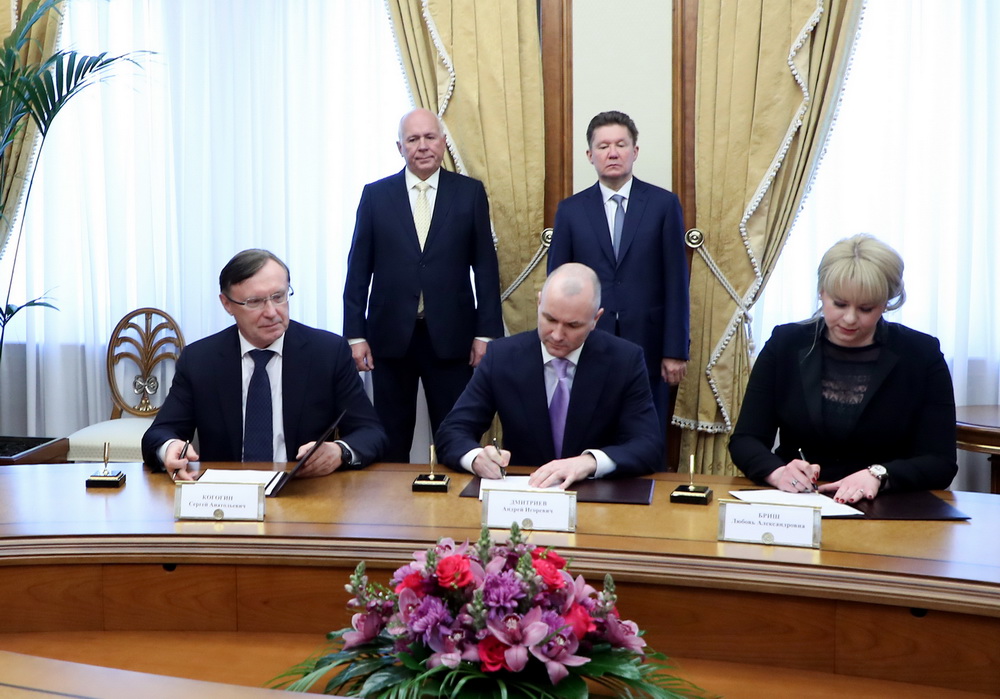
Release
- Batch production of trucks to be carried out by KAMAZ.
- Gazprom to set up LNG production and refueling infrastructure.
- First 18 trucks to go on road in 2021.
A working meeting between Alexey Miller, Chairman of the Gazprom Management Committee, and Sergey Chemezov, Director General of the state-owned Rostec Corporation, took place today in Moscow.
The meeting participants reviewed the potential areas of cooperation between Gazprom and Rostec enterprises, including the transportation of liquid helium from the Amur Gas Processing Plant (GPP) for the purpose of exporting it via the Logistics Center in the Primorye Territory.
Gazprom Gazenergoset Geliy, Gazprom Gazomotornoye Toplivo, and KAMAZ (part of Rostec) signed a Cooperation Agreement in the presence of Alexey Miller and Sergey Chemezov.
According to the document, Gazprom Gazenergoset Geliy (the company authorized to implement the Helium Tank Logistics Center investment project) plans to purchase gas-powered vehicles to transport liquid helium. To that end, freight trucks powered by liquefied natural gas (LNG) will be used. Batch production of these trucks will be carried out at the facilities of KAMAZ. The infrastructure for producing LNG and refueling these trucks will be set up by Gazprom Gazomotornoye Toplivo.
As a follow-up to the Agreement, Gazprom Gazenergoset Geliy and KAMAZ signed an Action Plan (roadmap). The first 18 LNG-powered trucks that will transport helium in special thermally-insulated containers are expected to be delivered in 2021.
Background
Gazprom and Rostec signed a Cooperation Agreement at the St. Petersburg International Economic Forum 2019.
The parties intend to join forces in order to, inter alia, create a standardized 25 MW gas compressor unit and new modifications of gas turbine engines, launch the manufacture of LNG storage, transportation and loading equipment, and design modular power plants with diesel and gas-fueled reciprocating engines. The parties will also cooperate to expand the uses of composite materials and other state-of-the-art structural materials, to promote the application of digital technologies, and to deal with the challenges of technological development and import substitution.
